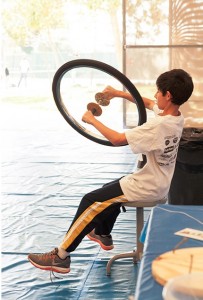
Last weekend my children’s school had a science fair which they called “STEAM Day”, for Science, Technology, Engineering, Arts and Math. It turned out to be a engaging and dynamic event, with lots of great demonstrations and activities for the children, ranging from kindergarten to 8th grade.
I volunteered to run an activity demonstrating angular momentum conservation, which was titled “You Spin me Round”. Our primary demonstration used a large gyroscope made from a bicycle wheel with two handles, like this one here. I (and my oldest son, who was my assistant) would spin up the bicycle wheel, and carefully hand it to a child who was sitting on a stool that was free to rotate. We then told the child to tilt the bicycle wheel to the right or the left. They were usually surprised to find that the spinning wheel “resisted” this change, and that they would start to rotate in the direction in which they turned the wheel! One tip I would recommend for anybody else trying this experiment – it was tremendously helpful to have work gloves for use in spinning up the bicycle wheel. After several hours, the palm of my hand was bruised and sore!
The children were too young to understand a detailed explanation of angular momentum conservation using torque and angular momentum vectors, so we tried to keep the explanation simple and qualitative. Basically, we explained:
- Rotating objects have a property called “angular momentum” that doesn’t like to change. Tilting the wheel changes the direction of its angular momentum.
- The wheel then causes you to spin on the stool, which creates additional angular momentum to help keep the total angular momentum of the system involving you, the stool and the bicycle wheel the same.
Our demonstration station was located under a basketball hoop in the gym, so we hug a rope with a hook from the hoop above us to perform a second experiment with the bicycle tire. One of the handles had a loop which we could attach to the hook. We showed that when the wheel suspended by the loop, it would hang straight down, but when we started the wheel spinning, and attached it to the hook with the wheel in a vertical orientation, it appeared to defy gravity! The wheel didn’t fall over, instead it would rotate (or “precess”) about the rope until the wheel slowed down. A simple video of this effect can be seen below:
http://www.youtube.com/watch?v=8H98BgRzpOM

For those kids who were interested, I tried to explain how this “precession” is responsible for turning a motorcycle or (less so) a bicycle at high speeds. There is a terrific explanation of this effect here.
As an aside, in researching angular momentum and bicycle dynamics, I was surprised to find that angular momentum is not primarily responsible for the stability of a moving bicycle. Apparently, someone has constructed a bicycle with a counter-rotating flywheel to cancel the angular momentum of the spinning wheels, and the bicycle was still able to balance well (see technical article here). It seems that the ability to steer into a turn is more responsible for bicycle stability than angular momentum.
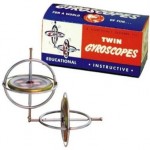
We also let the kids play with “old-fashioned” gyroscope toys to further demonstrate the stabilizing effects of angular momentum. I ordered several of the gyroscopes that you spin up with a pull-string from Amazon, and let the kids experiment with them. The kids enjoyed watching the spinning gyroscopes balance on the end of a pencil and on a thread strung between two nails in a block of wood. We pointed out how the spinning gyroscopes would start to precess more and more rapidly as the spinning flywheel slowed, but they didn’t fall over until they flywheel had almost stopped.
In addition to the bicycle wheel and toy gyroscope experiments, my kids and I put together a demonstration of the uses of gyroscopic chips in various electronic applications, including two-wheeled scooters and cell-phones/video games. I’ll write about those in subsequent posts.
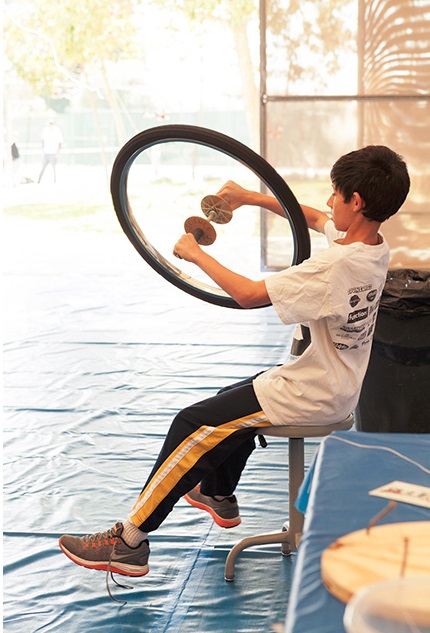
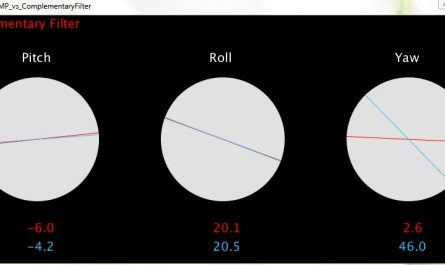

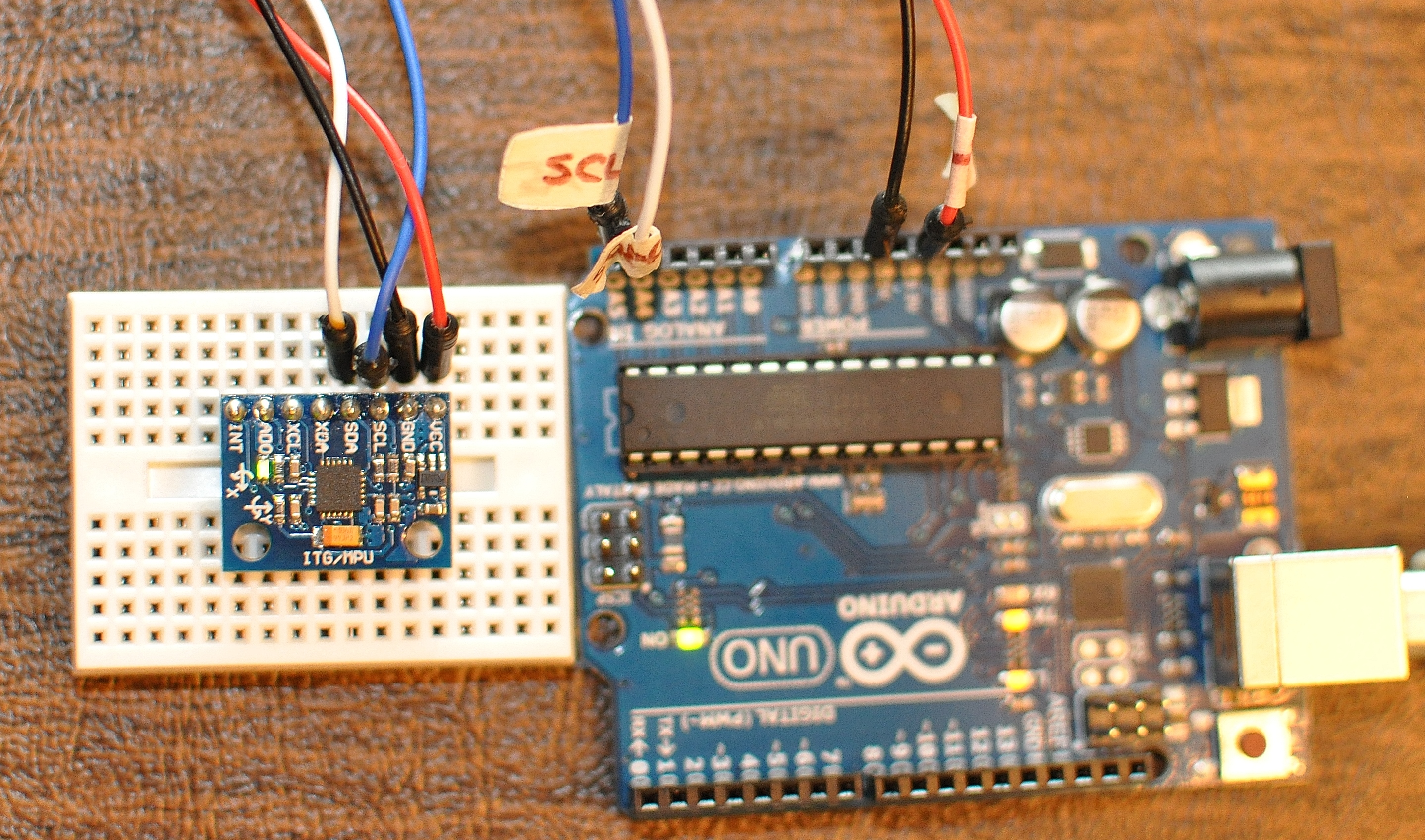
Thanks for this, my son has decided to try and explain this for his science fair. (He is prep 6 so 11 years old). I think we have grasped the basics of the spinning chair experiment (thanks for the clear explanation)
He loved the bike wheel defying gravity. I am, however, struggling to understand let alone explain to him how that is working and how its linked to angular momentum. If you have a second I would really appreciate a VERY simple way of helping him to understand so he can do this experiment too (he really loved it).
Thanks
Hannah
Hi Hannah,
I’m glad you and your son found the ost helpful. The hanging bicycle wheel and precession are a tough phenomenon to explain qualitatively, but I think this article does as good a job as is possible without resorting to equations. I hope it’s helpful. Good luck to your son (and you – I’ve been there) with the Science Fair! https://science.howstuffworks.com/gyroscope2.htm
Best,
Debra
Hello. Love this article. We’re doing this for our science fair but need to graph the wheel hanging on the rope experiment somehow. Any ideas how to easily graph this for the science fair? 10 years old.4th grade. Thanks!
Glad you found the article useful. I think that a good graph to do would be to start it spinning, then measure the time for which it stays reasonably horizontal (you’ll have to decide what “horizontal” means), and count how many times it “precesses” (rotates around the rope) before it falls. You could repeat the experiment, and graph the number of precessions vs. the time it stays spinning. What do you think?